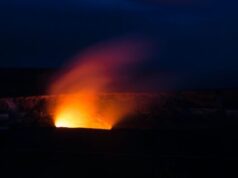Image Credit: Flickr/barnyz
Methane emissions caused by human activity may have a bigger impact on global warming than previously thought, scientists have found.
Research led by the University of Reading indicates that emissions of methane due to human activity have, to date, caused a warming effect which is about one-third of the warming effect due to carbon dioxide emissions – this methane contribution is 25% higher than previous estimates.
Professor Keith Shine, Regius Professor of Meteorology and Climate Science at the University of Reading, said: “These new calculations are important, not only for quantifying methane’s contribution to human-induced climate change, but also for countries looking to reduce their emissions to meet international targets on climate change, especially if those countries are significant emitters of methane.
“Our research re-affirms the scientific basis for focusing on carbon dioxide emissions, but also highlights that methane must not be ignored if the world wants to consider all options to curb global warming.”
The study was carried out by scientists at the Department of Meteorology at the University of Reading, UK, and at the Center for International Climate and Environmental Research – Oslo (CICERO), Norway.
Find your dream job in the space industry. Check our Space Job Board »
The new study, by Maryam Etminan and colleagues, is published in the American Geophysical Union’s journal Geophysical Research Letters. The full report is open access and freely available.
The scientists calculated that, while carbon dioxide remains by far the most significant gas driving human-induced climate change, methane, while much less abundant, is even more potent than previously thought. They found that a one tonne emission of methane has the equivalent warming effect of 32 tonnes of carbon dioxide – up from the previous estimate of 28.
While previous studies have focused on the role of methane in greenhouse trapping of the infrared energy emitted by the Earth and its atmosphere, this new study also took into account the way methane absorbs energy from the sun, at shorter wavelengths. It shows that much of the extra absorption is in the lower part of the atmosphere, where it has a warming effect.
“Clouds play a particularly important role in causing this enhanced warming effect,” said Professor Ellie Highwood, University of Reading, one of the co-authors of the study.
“Clouds reflect some of the sun’s rays back towards space, but by absorbing some of these scattered rays low down in the atmosphere, methane has an extra warming effect – a factor that was not considered by earlier studies.”
“We used the same method for new calculations of carbon dioxide as for methane and found very similar result to earlier studies,” said Dr Gunnar Myhre, CICERO, one of the co-authors of the study.
Human activity has led to more than a doubling of the atmospheric concentration of methane since the 18th century. Methane emissions due to human activity come from agricultural sources, such as livestock, soil management and rice production, and from the production and use of coal, oil and natural gas.
Source: University of Reading
Journal Reference:
M. Etminan et al. Radiative forcing of carbon dioxide, methane, and nitrous oxide: A significant revision of the methane radiative forcing, Geophysical Research Letters (2016). DOI: 10.1002/2016GL071930











